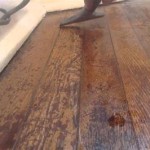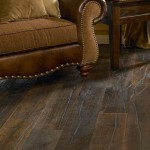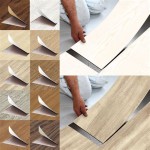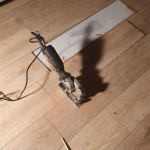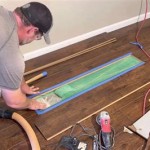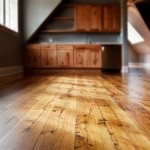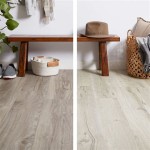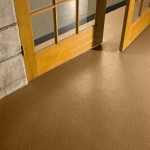How To Remove Sticky Glue From Hardwood Floors
Hardwood floors, prized for their beauty and durability, can sometimes fall victim to sticky glue residue. This unwelcome substance can originate from various sources, including adhesive-backed rugs, misplaced tape, or spills from arts and crafts projects. Removing sticky glue from hardwood floors requires patience and a methodical approach to avoid damaging the wood's finish. Employing the correct techniques and tools is essential for a successful outcome.
Identifying the Type of Glue
Before attempting any removal method, it is crucial to identify the type of glue present on the hardwood floor. Different adhesives respond to different solvents and techniques. Common types of glue encountered on hardwood floors include pressure-sensitive adhesives (found on tapes and stickers), construction adhesives (like those used for installing flooring), and craft glues (such as school glue or super glue). Understanding the glue's composition significantly influences the selection of the appropriate removal method.
Pressure-sensitive adhesives, often found on stickers and tape, are generally the easiest to remove. They tend to soften with heat or solvents. Construction adhesives, designed for permanent bonding, pose a greater challenge and may require more aggressive techniques. Craft glues vary in their composition, with some being water-soluble and others requiring stronger solvents for removal.
A simple test can sometimes help to identify the glue type. A small, inconspicuous area of the affected flooring can be treated with a damp cloth. If the glue begins to soften and dissolve, it is likely a water-soluble glue. If water has no effect, more robust methods will be needed.
Essential Tools and Materials
Having the right tools and materials on hand is critical for efficiently and safely removing sticky glue from hardwood floors. The following items are typically required:
- Plastic Scraper: A plastic scraper is a valuable tool for lifting softened glue without scratching the hardwood finish. Avoid using metal scrapers, as they can easily gouge or damage the floor.
- Soft Cloths or Rags: Clean, soft cloths are essential for applying solvents, wiping away loosened glue, and buffing the floor after removal.
- Warm Water: Warm water is a gentle starting point for removing water-soluble glues.
- Mild Dish Soap: A diluted solution of mild dish soap can help break down some adhesive residues.
- Vinegar: White vinegar is a natural solvent that can be effective for dissolving certain types of glue.
- Isopropyl Alcohol (Rubbing Alcohol): Isopropyl alcohol is a stronger solvent that can dissolve many types of adhesives. It is crucial to test it in an inconspicuous area first to ensure it does not damage the floor's finish.
- Mineral Spirits: Mineral spirits are a powerful solvent useful for removing stubborn adhesives, particularly construction adhesives. Exercise extreme caution when using mineral spirits, as they are flammable and can emit harmful vapors. Ensure adequate ventilation and wear appropriate safety gear, such as gloves and a respirator.
- Hair Dryer or Heat Gun (on low setting): Applying gentle heat can soften some adhesives, making them easier to scrape away. Use caution to avoid overheating the floor, which could damage the finish.
- Gloves: Protective gloves are essential when handling solvents to prevent skin irritation.
- Eye Protection: Eye protection, such as safety glasses, is recommended to prevent solvents or glue fragments from entering the eyes.
Step-by-Step Removal Methods
Once the type of glue is identified and the necessary tools and materials are gathered, the removal process can begin. Start with the gentlest methods and progress to stronger solvents only if necessary.
1. Warm Water and Soap: Begin by moistening a soft cloth with warm water. Gently rub the affected area to soften the glue. If the glue begins to loosen, continue wiping with the damp cloth. If the glue remains stubborn, add a small amount of mild dish soap to the warm water. Continue rubbing gently, and use a plastic scraper to carefully lift any softened glue. Rinse the area with a clean, damp cloth to remove any soap residue and dry thoroughly.
2. Vinegar: If warm water and soap are ineffective, try vinegar. Dampen a soft cloth with white vinegar and apply it to the sticky area. Allow the vinegar to sit for several minutes to soften the glue. Use a plastic scraper to gently lift the softened adhesive. Wipe the area with a clean, damp cloth to remove any vinegar residue and dry thoroughly.
3. Isopropyl Alcohol: If vinegar is not sufficient, isopropyl alcohol can be used. Before applying isopropyl alcohol, test it in an inconspicuous area of the floor to ensure it does not damage the finish. If the finish appears unaffected, dampen a soft cloth with isopropyl alcohol and apply it to the sticky area. Allow the alcohol to sit for a few minutes to dissolve the glue. Use a plastic scraper to gently lift the softened adhesive. Wipe the area with a clean, damp cloth to remove any alcohol residue and dry thoroughly.
4. Heat Application: Applying gentle heat can soften some adhesives. Use a hair dryer or heat gun on a low setting to gently warm the sticky area. Be careful not to overheat the floor. As the glue softens, use a plastic scraper to gently lift it away. Wipe the area with a clean, damp cloth to remove any residue and dry thoroughly.
5. Mineral Spirits: Mineral spirits should be used as a last resort due to their strong solvent properties and potential health hazards. Ensure adequate ventilation by opening windows and doors. Wear gloves and eye protection. Dampen a soft cloth with mineral spirits and apply it to the sticky area. Allow the mineral spirits to sit for a few minutes to dissolve the adhesive. Use a plastic scraper to gently lift the softened glue. Wipe the area with a clean, damp cloth to remove any mineral spirits residue. It may be necessary to repeat this process several times to completely remove the adhesive. After removing the glue, thoroughly ventilate the area to dissipate any remaining fumes.
Post-Removal Care: After removing the sticky glue, it is important to clean and protect the hardwood floor. Use a hardwood floor cleaner to remove any remaining residue and restore the floor's shine. Consider applying a coat of hardwood floor polish or wax to protect the finish and prevent future adhesive buildup.
Throughout the entire process, patience is paramount. Avoid rushing or using excessive force, as this can lead to damage to the hardwood flooring. Always test cleaning solutions and solvents in an inconspicuous location before applying them to the affected area. By carefully following these steps, sticky glue can be removed from hardwood floors without causing lasting harm.

Removing Glue Or Adhesive From Hardwood Floors The Speckled Goat

How To Remove Glue From Wood Floors Pete S

Removing Glue Or Adhesive From Hardwood Floors The Speckled Goat

4 Ways To Remove Adhesive From A Hardwood Floor Wikihow

Flooring How Can I Remove Carpet Adhesive From Hardwood Floors Home Improvement Stack Exchange

4 Ways To Remove Adhesive From A Hardwood Floor Wikihow

Removing Glue Or Adhesive From Hardwood Floors The Speckled Goat

Removing Glue Tar Paper From Hardwood Floors Farmhouse Restoration Day In The Life

How To Remove Glue From Wood Floors Pete S

4 Ways To Remove Adhesive From A Hardwood Floor Wikihow
See Also
